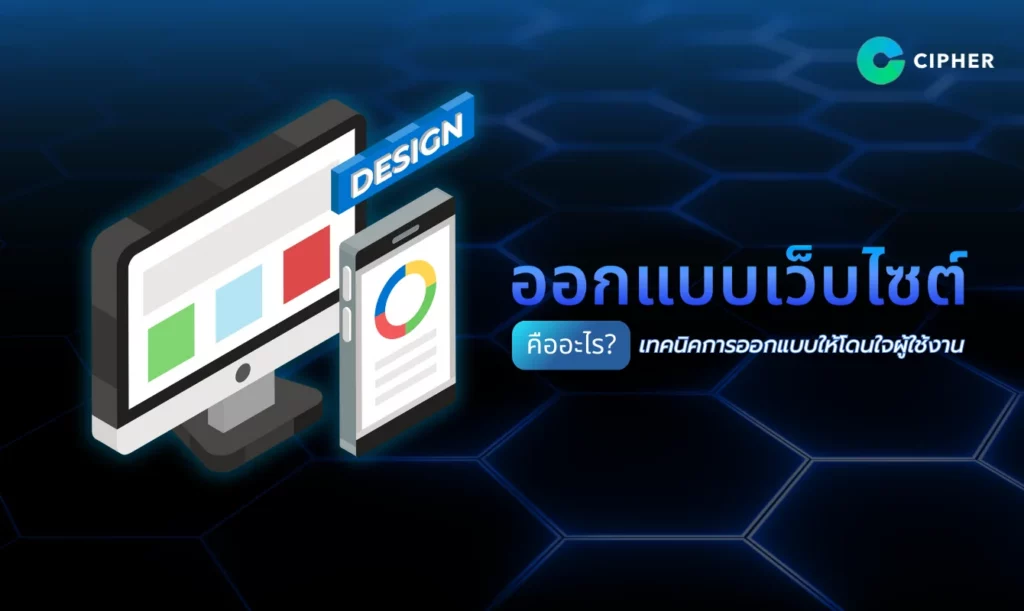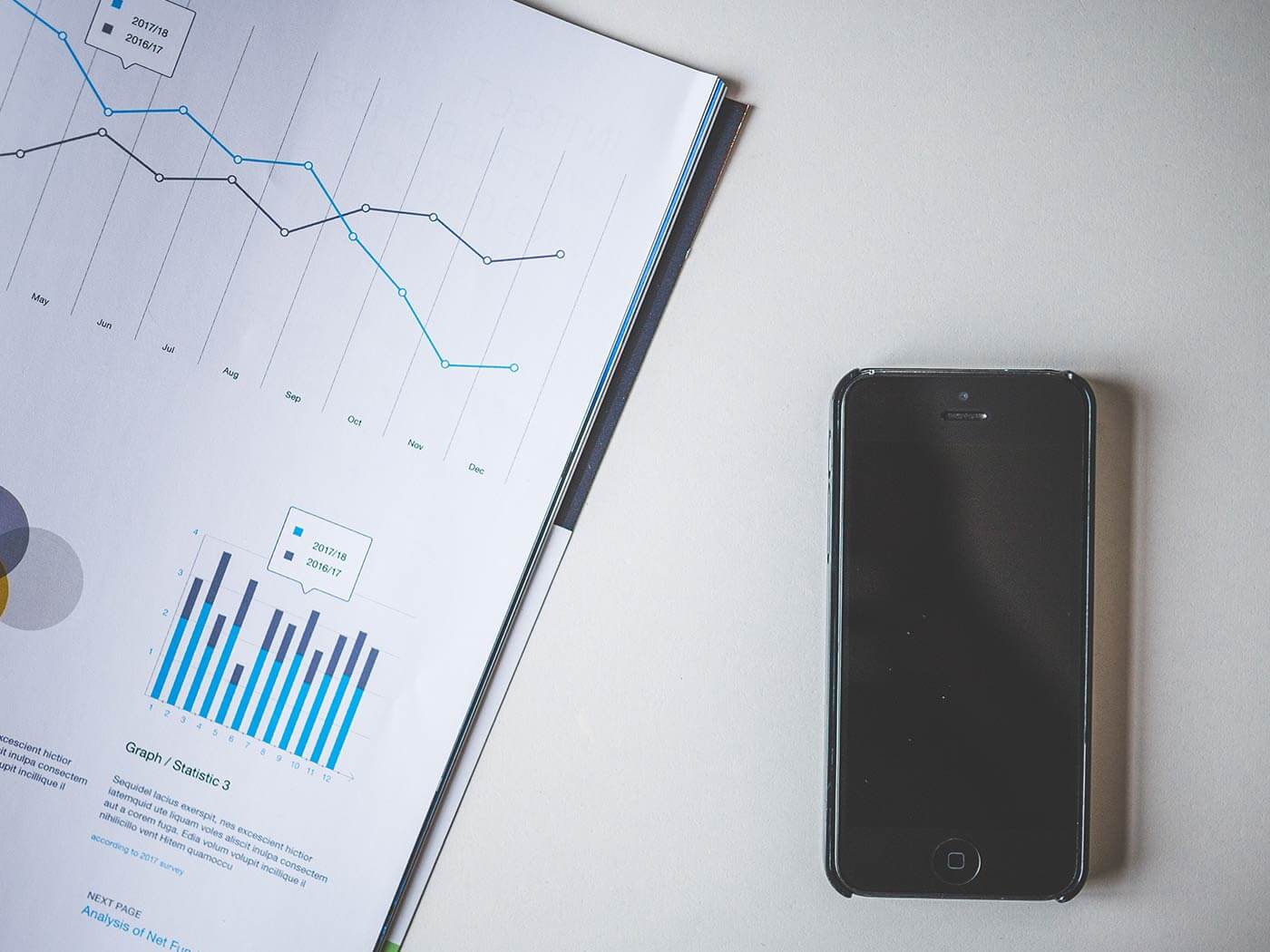Table of Contents
The design of the website is: What? Design techniques to appeal to the user.
The website is an important factor that will give visitors a first impression. Designing a good page not only needs to be beautiful but also needs to address the brand’s use and communicate clearly.
In this article, we will introduce you to the principles of Graphic Design and Web Design & Development that will help you understand the design basis and explore design techniques that will make your website stand out and create a better user experience!
Website design (Website Design) is What?
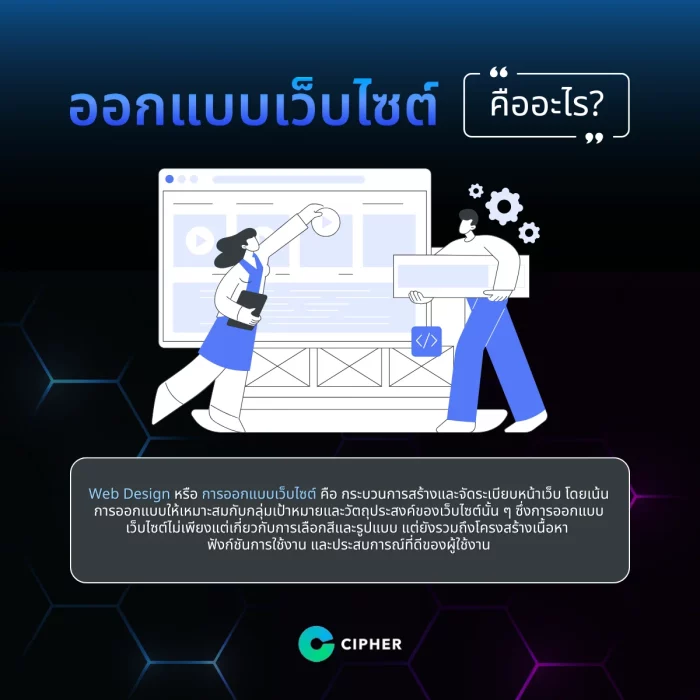
Web Design is the process of creating and organizing web pages, focusing on designing them to suit the site’s target and purpose. Web design involves not only color and format selection, but content structure, functionality, and user experience (UX).
Design Website or Design Website will be considered in a variety of areas, including graphic design for each page, layout for information to be displayed properly, as well as the selection of technology suitable for display in various devices.
SEO (Search Engine Optimization) must also be considered to make websites easy to find in search engines and website security to protect user information. Designing a web page is an important step in creating a positive user experience and increasing business reliability.
Why is design important?
Web Design is critical to the user experience. A well-designed website gives users easy access to information, makes a first impression, and reuses their decision. On the other hand, if a website is difficult to use or poorly designed, it can cause frustration and disuse.
Web design is an important step, taking into account both UX and UI requirements through the creation of a smooth Customer Journey and the selection of components that are consistent with the brand. All of this makes users feel comfortable and natural.
What are the benefits of designing a website? ?
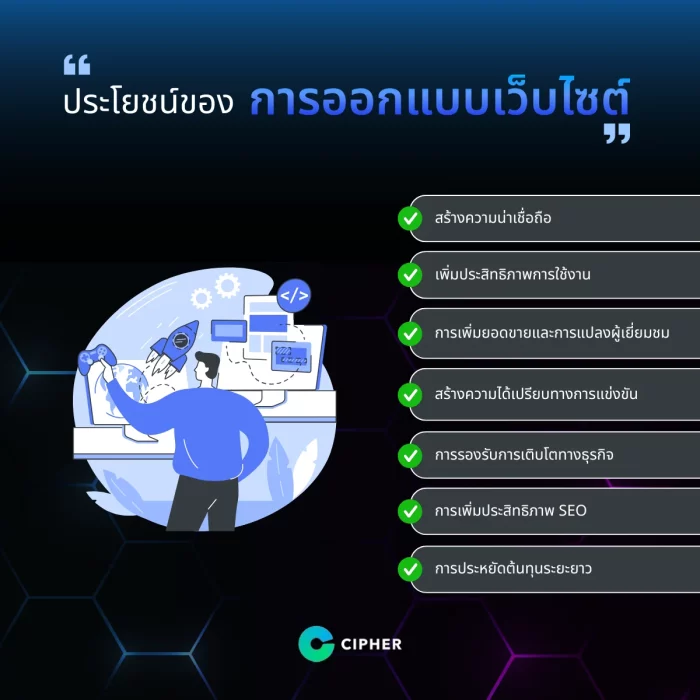
- Build credibility: Designing a quality website not only gives the first impression, but also reflects the professionalism and reliability of the business. When users see the website, they feel more confident in using the service or purchasing products.
- Improved Productivity: A website with a good UX/UI design allows users to navigate and find information quickly, without confusion. Organized placement of components reduces learning time and reduces exit rates.
- Increasing sales and visitor transformation: The Convergence Optimization-focused design makes it easier for users to make decisions such as placing call to action buttons in the right locations, designing simple payment pages, and displaying complete product or service information.
- Achieve competitive advantages: Web sites with innovative designs that meet the needs of users will help businesses compete better in the online market because consumers tend to choose from websites that are more reliable and easy to use.
- Supporting Business Growth: Building a well-structured and flexible web site will support future business growth, whether it’s adding new features, updating content, or increasing sales channels, eliminating the need to design a completely new web site.
- SEO Performance Enhancements: SEO-aware design will improve search ranking websites in terms of loading speed, search engines-friendly content layout and optimal URL structure, resulting in a natural increase in website visitors.
- Long-term cost savings: While investing in a professional web site may be costly at first, it can save you money in the long run as it reduces the need to solve problems, reduces customer loss from poor user experience, and improves online business efficiency.
Site Design Process (Website Design Process)
Designing an efficient website requires systematic steps to achieve results that meet the requirements and provide a positive user experience. Designing the website is an important process that requires careful planning from the outset.
To design a website that is beautiful and practical, it is important to understand the design principles and basics of Web Design and follow the systematic steps to obtain a website that meets both beauty and usefulness. The design process is as follows:
inquire after a customer's needs
Analyzing the Keyword and Mood & Tone of the website
Design a sketch template and create a website structure (UX/UI Design).
This process takes the data to start designing the site structure with UX/UI Design principles to allow users to browse the site smoothly and naturally. Designers create a draft of the site structure in both Wireframe and Mockup format to give an overview of the layout of the components before starting the design.
Gather information and create a home page template.
The Web Design phase focuses on creating a complete home page, collecting content, images, and graphic elements according to the planned structure. Designers will use their Web Design skills to create beautiful, easy-to-use pages that meet customers’ business objectives.
Send Validation Template
Once the site design is complete, the template will be sent to customers to review the content and beauty of the site design to ensure that it meets their requirements. At this stage, designers will listen to customer feedback and suggestions to improve the site design.
Edit and Close a Design Job
After receiving the recommendation, designers will modify the details of the design of the website according to the customer’s requirements to get a complete and ready-to-deploy work.
The final step is to check the integrity of all components of the Design Website again before handing over all the files to the customer for further development in the coding process.
A total of 7 techniques are designed to make the website look good and interesting.
Web design is critical to business growth and sales. We’ve included seven techniques to make your website even more unique.
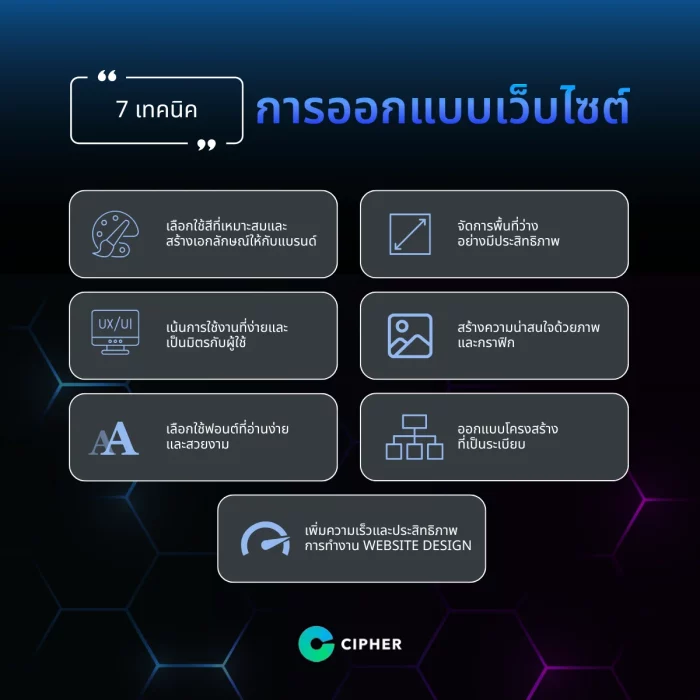
1. Choose the right color and create brand identity.
Designing a good website starts with choosing a color tone that conveys the identity of the brand. Professional web site designers often recommend using 60 – 30 – 10 principles for color placement, 60% primary, 30% secondary, and 10% focus to balance and attractiveness.
Successful website design takes into account the psychology of color that affects the user’s feelings. Page design should be color-coded to match the website’s target and purpose. For example, blue represents reliability and green represents freshness and environmental friendly.
2. Manage Free Space Effectively
In an efficient Web Design, White Space is the key to keeping websites comfortable and comfortable. Web Designers need to balance space and content so that users can access information easily and uncomfortablely.
Designing a beautiful website does not mean filling up space, but allowing space to breathe. A good way to design a website should consider the proper distance between elements to help bring the user’s eyes to the important points of the website.
3. Focus on user friendly and easy to use
Designing a good website requires the user experience. Designing a successful website requires a clear navigation structure, easy-to-see buttons and easy-to-access menus to allow users to browse the website smoothly.
The simple yet powerful web design will impress users. Page designs should take into account the responsive design and ensure that all functions are seamlessly enabled through any device.
4. interest oneself with pictures and graphics
Professional Web Site Designer knows that quality images and graphics can make a big difference in website design. Choosing high-resolution images to match content and layout is a web design technique that will help attract the attention of visitors.
Another popular way to design websites is to combine still and animation. Web Design with animation will add vitality to the website, but be careful not to overload it.
5. Choose a font that is easy to read and beautiful.
Efficient Web site design requires the use of fonts, a key component of communicating with users. Web Site Designer should choose fonts that are easy to read, clear and fit the brand image and should not use more than 2-3 fonts at one site.
Font-conscious website design will help build reliability and professionalism. Also, in designing web pages, appropriate font size and spacing should be taken into account and organized text layout to allow users to read content easily.
6. design an orderly structure
The design of beautiful websites requires a clear structure and priorities. Good Web Design should systematically organize elements, topics, content, and other components to make it easy for users to understand and track content.
Efficient Design Websites require prioritization of information.
The design of the website should provide important information in a prominent location and organize secondary content in order of importance so that users can quickly access the information they need.
7. Accelerate and Productivity Web Site Design
Experienced Web Site Designer focuses on the speed at which web pages are loaded. Good Web site design takes into account image compression, efficient code management, and not too many appropriate technologies to get the site up and running quickly.
The most effective way to design a website is to test and improve it regularly. Good website design must work seamlessly on all devices and browsers. Regular monitoring of speed and performance will help to maximize website performance and impress users.
Introducing interesting trends for web design
Today’s web design is constantly evolving. Web Design professionals need to keep up with new trends to create innovative works that meet the needs of users. Let’s see what’s interesting about web design trends there. Anything?
Minimalist design focused on user experience
Many Web Site Designers have focused more on designing beautiful minimalist websites by focusing on simplifying the layout of components, making space more useful, and reducing complexity. This approach allows users to access information faster and easier.
Using animations and micro-interactions
The emerging Design Website trend is to use small animations and micro-interactions to design web pages to create interesting and user engagement, such as moving the mouse over buttons and changing colors or displaying moving icons when loading web pages.
Using Dark Mode for Eye Protection
The Dark Mode website design is not only a strong trend, but it also meets superior usage requirements by reducing eye fatigue and saving energy for OLED displays. It also creates a more luxurious, modern and unique feel for the website.
การใช้ 3D Elements and Visuals
The use of 3D graphics or 3D images on the website is another trend this year, adding dimensions to images and components to make the website more exciting and attractive, especially when combined with interactive features that create an impressive user experience.
How about choosing a web service?
Web Design is an important process that helps to create image and credibility for businesses online. Creating a website by a professional or expert website will help you find a website that is beautiful, easy to use and meets your business needs while saving you time and resources to learn about technology. That allows you to focus fully on business development.
CIPHER has a full range of web design and development services.
CIPHER, the leader in website creation, provides a comprehensive web development experience with a team of experts who are ready to upgrade your business to the full digital world.
- Comprehensive Web Design & Development Services: Our team specializes in designing and developing innovative websites to meet both desktop and mobile device requirements and features that enhance your business performance.
- Template Design & Development to Meet Every Business: CIPHER has a web template design service that can be customized to suit your brand, saving you time and budget, but maintaining your unique identity.
- A fully integrated web-building solution: We offer services ranging from site structure planning, UI/UX design, back-end system development, to post-delivery maintenance and maintenance.
- Consulting Professional Team: CIPHER designers and developers are ready to provide advice and solutions throughout the development process so that you can get the website that best meets your needs.
No matter what kind of website you want, CIPHER is ready to partner in building a website that will help drive your business to success with the experience and expertise to meet all your needs.
Conclusion
Website design is to create a page that is beautiful, easy to use, and to suit the user’s needs. It must be considered in terms of composition, color, font, and UI/UX design.
If you’re looking for a company that specializes in web design, CIPHER offers a full suite of web consulting and design services with a professional team that will help you and your users create a website that suits you and your users!
Frequently Asked Questions About Web Design
Designing a website is an important step that must be taken into consideration in order to maximize the efficiency of the website. We will answer the most popular questions that designers and interested parties often have as follows:
Website design means What?
Web design is the process of creating and organizing elements on the web page to be beautiful, easy to use and meet user objectives, including layout, color, font, photo and space management, as well as design for display on a variety of devices. To create a positive user experience and achieve business or corporate goals.
The principles of website design are: Anything?
- User-friendly design: The website needs to be easy to use, understand immediately, and meet the needs of the user. It clearly presents the information that the user needs.
- Layout (Layout): Organize content and components in an orderly fashion, use space appropriately to make websites comfortable and accessible.
- Simplicity and beauty: Choose consistent colors, letters, and illustrations, without distortion, and clearly express the brand’s identity.
- Efficiency: Fast loading, responsive Web Design support. It has a clear and easy-to-use navigation system.
- Search Configuration (SEO): Design a Search Engine-friendly website structure to rank well in search rankings.
- Security: Standardized security, protecting user and web data.
How many types of website creation are there? Anything?
How many types of website creation are there? Anything?
- Create with Static Web Site: Creating a web site in HTML, CSS and JavaScript directly gives developers the freedom to design and control their work. It is ideal for developers with programming knowledge and needs a unique website.
- Built with CMS Software (Content Management System): For example, WordPress, Joomla, Drupal is a ready-to-use content management system with a wide range of themes and plugins. Users can customize websites without coding for those who want to create websites with complex content management systems.
- Built with Web Builder: such as Wix, Shopify and Webflow is a platform designed to make websites easy for users to create with drag and drop. There is no need for programming knowledge suitable for beginners or those who want to create websites quickly.
The site contains components. Anything?
- Header: Top area of the website where the logo and main menu are displayed.
- Content: The main content area of the website.
- Footer: The bottom section often shows important contact and link information.
- Navigation menu: menu bar for links to pages
- Banner (Banner): the site’s main advertising area or image.
- Sidebar: Sidebar for submenu display or additional information
- Forms: user input, such as registration or contact
- Button (Buttons): a component used to interact with users, such as the Call to Action button.
- Images (Images): Illustrations used on websites
- Links: Links to other internal and external pages

